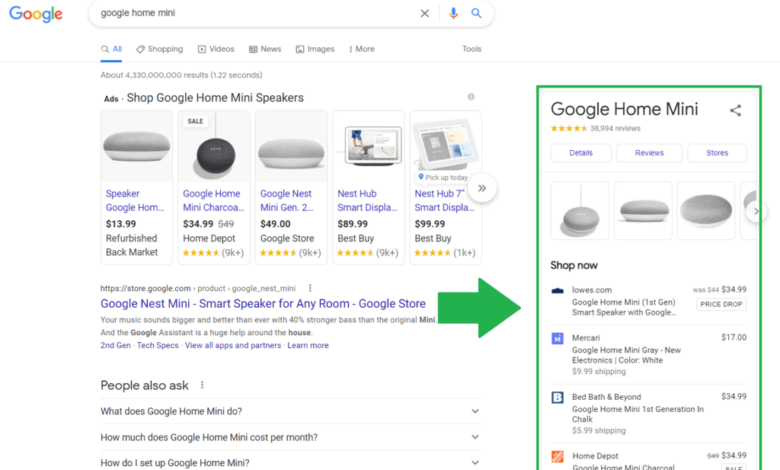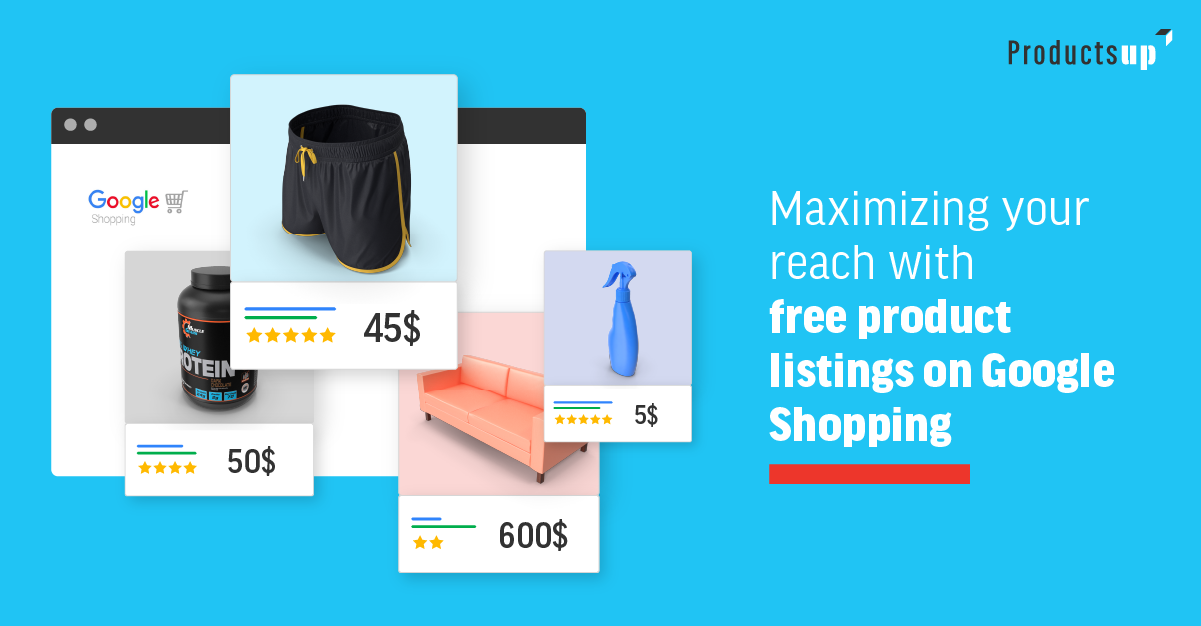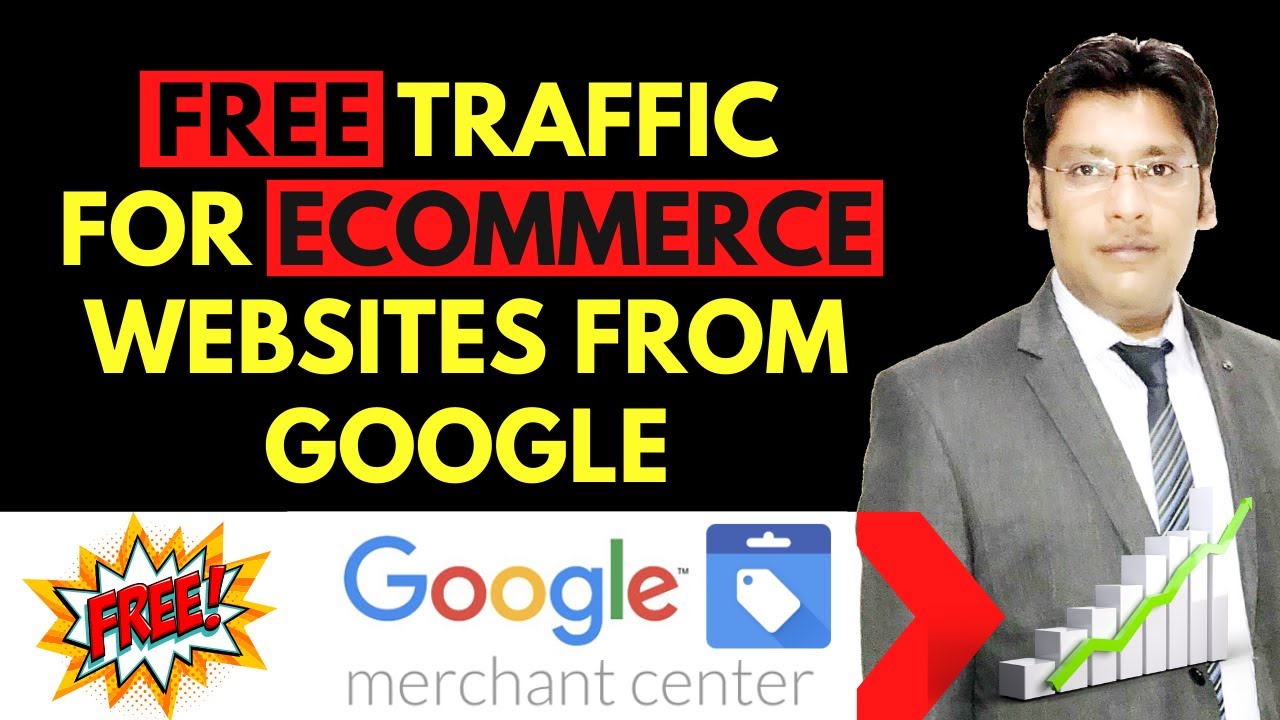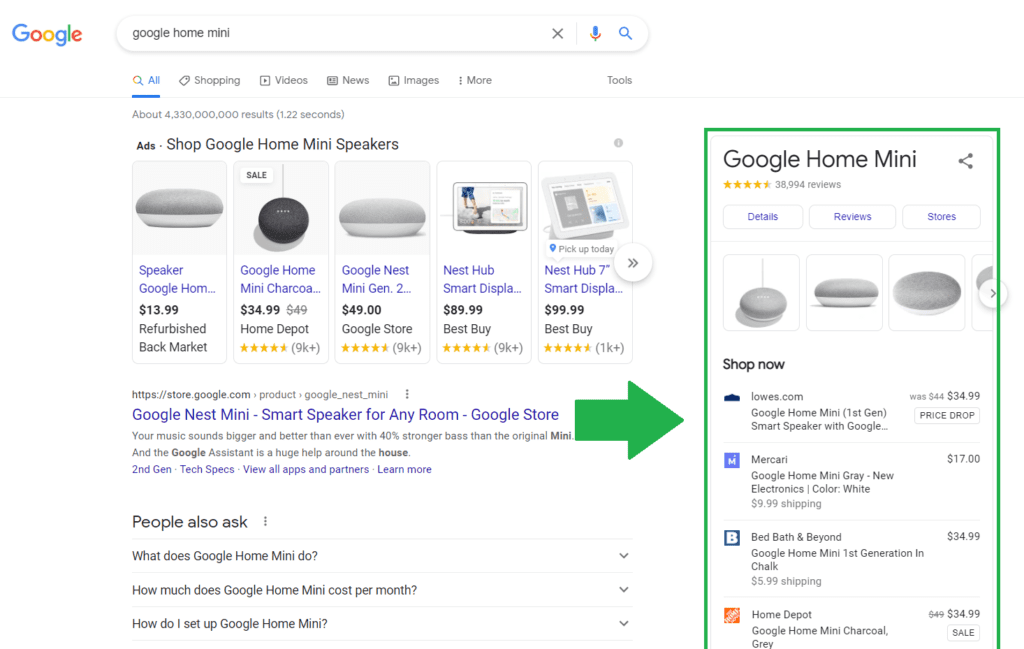
Google Free Shopping Listings Boost Your Sales
Google Free Shopping Listings: Ever wondered how to get your products in front of millions of potential customers without breaking the bank? This isn’t some magical secret; it’s about leveraging Google’s free product listing feature. It’s a game-changer for small businesses and larger companies alike, offering a powerful way to compete alongside paid ads, and this post will walk you through exactly how to make the most of it.
We’ll cover everything from setting up your first listing to optimizing it for maximum visibility and tracking your results. Think of it as your comprehensive guide to conquering the world of free Google shopping listings, one click at a time. Get ready to learn how to create compelling product descriptions, choose the right images, and analyze your data to improve your sales.
This isn’t just about getting listed; it’s about getting
-found*.
Understanding Google’s Free Shopping Listings

Source: ctfassets.net
Google’s free product listings offer a fantastic opportunity for businesses of all sizes to get their products in front of potential customers searching on Google. Unlike paid Shopping ads, these listings are organic, meaning they don’t require a bidding process. This guide will break down how they work, who can use them, and how to get started.Google’s free product listings work by integrating your product data with Google’s Shopping results.
When a user searches for a product on Google, your product might appear alongside paid ads and other organic results, increasing your visibility without incurring ad costs. This leverages Google’s existing product knowledge graph and your provided product data to showcase your offerings to relevant searches. Essentially, Google crawls your website and product feeds to identify and display your products organically within the Shopping tab.
Eligibility Requirements for Google’s Free Listings
To be eligible for Google’s free product listings, your business must meet several criteria. First, you need a Google Merchant Center account. This is the central hub for managing your product data and connecting it to Google Shopping. Next, your product data must be accurate and complete, including high-quality images, detailed descriptions, and accurate pricing. Your website must also adhere to Google’s general guidelines, including having a functional and user-friendly experience.
Finally, you must comply with Google’s Shopping policies, which prohibit the sale of certain products and require transparent and ethical business practices. Failure to meet these requirements can result in your listings being disapproved or suspended.
Comparison of Free Listings and Paid Shopping Ads, Google free shopping listings
Google’s free listings and paid Shopping ads serve different purposes and offer distinct advantages. Free listings provide organic visibility, relying on Google’s algorithm to determine their ranking and placement. This means you don’t pay per click, but your visibility depends on factors like product quality, website optimization, and competition. Paid Shopping ads, on the other hand, allow you to bid on s and guarantee a prominent position in the search results.
While you pay per click, this approach ensures your products are highly visible, even for highly competitive s. Businesses often use a combination of both strategies for maximum impact. For example, a small business might rely heavily on free listings to build brand awareness, supplementing with targeted paid ads for specific high-demand products. A larger company with a strong brand presence might use paid ads more aggressively for increased market share.
Creating a Free Product Listing: A Step-by-Step Guide
Creating a free product listing involves several key steps. First, you need to create a Google Merchant Center account and verify your website ownership. Then, you’ll need to create a product data feed, which is an organized file containing all your product information. This feed can be in various formats, such as XML or CSV. Next, you’ll need to submit your product data feed to Google Merchant Center.
So you’re thinking about boosting your online sales with Google’s free shopping listings? That’s smart! But to really maximize your reach, you need to consider video marketing, and that’s where learning about effective YouTube strategies comes in – check out this awesome guide on getting it on with YouTube to get started. Once you’ve mastered YouTube, you can link your videos directly to your Google Shopping listings, creating a powerful, integrated marketing strategy that drives more traffic and sales.
Google will then review your data to ensure it meets their requirements. Once approved, your products will start appearing in Google Shopping results. Regularly monitoring your product data and making necessary updates is crucial for maintaining accurate and effective listings. This includes ensuring consistent pricing, stock levels, and product information. Failing to do so can lead to disapproved listings and lost opportunities.
Integrating with Other Google Services: Google Free Shopping Listings

Source: ytimg.com
Unlocking the full potential of Google’s free shopping listings requires strategic integration with other Google services. By connecting your listings to platforms like Google Business Profile and Google Merchant Center, you can significantly enhance your visibility, manage your product data efficiently, and gain valuable insights into your performance. This interconnected approach allows for a more streamlined and effective e-commerce strategy.Google’s free shopping listings, when integrated effectively, amplify your online presence and improve your customer experience.
This synergy allows for consistent brand messaging and optimized product information across multiple Google platforms, leading to a more cohesive and impactful online shopping journey for potential customers.
Google Business Profile Integration
Connecting your Google free shopping listings with your Google Business Profile (GBP) ensures consistency in your business information across Google’s ecosystem. This integration means your business name, address, and phone number (NAP) are accurately reflected in your shopping listings, building trust and credibility with potential customers. Inconsistent information can lead to confusion and lost sales; therefore, this synchronization is crucial.
Furthermore, GBP allows you to manage reviews and respond to customer queries, enhancing your brand reputation and driving customer engagement directly linked to your product listings. The visibility of your business on Google Maps also increases when your GBP is linked to your shopping listings, potentially attracting local customers.
Leveraging Google Merchant Center for Product Data Management
Google Merchant Center is the central hub for managing your product data for Google Shopping. While free listings don’t require a Merchant Center account, connecting your account significantly enhances your capabilities. By uploading your product data feed, you gain more control over the information displayed in your listings, including attributes such as product titles, descriptions, images, and pricing.
This allows for accurate and consistent product information across all Google Shopping surfaces. Moreover, Merchant Center provides tools to monitor your product data quality and identify any issues that might prevent your listings from appearing correctly or at all. It also provides access to additional features like promotional offers and various listing optimization options, unavailable for purely free listings.
Using Google Analytics to Track Free Listing Performance
Tracking the performance of your free shopping listings using Google Analytics is essential for optimizing your strategy. By linking your Google Analytics account to your Google Merchant Center, you can gain insights into key metrics such as clicks, impressions, and conversion rates. This data allows you to understand which products are performing well and which need improvement. Analyzing this data helps identify areas for optimization, such as improving product titles, descriptions, or images.
You can also use Google Analytics to track the source of traffic to your listings, understanding which marketing channels are most effective in driving sales. This granular data enables data-driven decisions to maximize the ROI of your free shopping listings.
Advantages of Connecting Free Listings to Other Google Services
The benefits of integrating your free shopping listings with other relevant Google services are significant. Proper integration streamlines your workflow, improves data accuracy, and enhances performance tracking.
- Improved data consistency across Google platforms.
- Enhanced visibility and discoverability for your products.
- Increased brand trust and credibility through consistent information.
- Access to advanced features and analytics for performance monitoring.
- Simplified product data management and optimization.
- Better understanding of customer behavior and preferences.
- Ability to respond directly to customer queries and reviews.
- Opportunities for local customer acquisition through Google Maps integration.
Case Studies of Successful Free Listings
Google’s free product listings offer a powerful, cost-effective way for businesses of all sizes to boost their online visibility. Many businesses have seen significant success leveraging this tool, demonstrating the potential for increased sales and brand awareness. Examining these successes reveals key strategies that can be replicated to achieve similar results.Successful implementation of Google’s free listings isn’t simply about listing products; it requires a strategic approach encompassing high-quality product data, compelling visuals, and a focus on user experience.
The following examples highlight businesses that have effectively employed these strategies.
Examples of Successful Businesses Utilizing Free Listings
Several businesses across various industries have successfully utilized Google’s free product listings to increase their online presence and drive sales. These businesses didn’t simply list their products; they strategically optimized their listings to maximize their impact. The common thread among these successes is a commitment to providing accurate, detailed, and visually appealing product information.
- A local bakery: This bakery leveraged high-quality images of its freshly baked goods, detailed descriptions highlighting unique ingredients and baking methods, and precise product information. This resulted in increased local searches and a boost in foot traffic and online orders. The visually appealing images and accurate descriptions helped them stand out from competitors.
- An online clothing retailer: This retailer focused on comprehensive product information, including detailed size charts, material composition, and care instructions. They also used high-resolution images showcasing the clothing from multiple angles. This improved customer confidence and reduced return rates, leading to higher conversion rates.
- A handmade jewelry business: This business emphasized the unique craftsmanship of its jewelry through detailed descriptions and high-quality images showcasing the intricate details. They also used relevant s in their product titles and descriptions to improve search visibility. This strategy effectively targeted customers interested in unique, handcrafted items.
Strategies Employed for High Visibility and Conversions
Achieving high visibility and conversions with Google’s free listings requires a multi-faceted approach. Optimizing product data, creating compelling visuals, and focusing on the user experience are crucial elements.
- High-Quality Product Data: Accurate and complete product information, including titles, descriptions, and attributes, is paramount. This ensures that your products appear in relevant searches and accurately reflect what customers are looking for. Inaccurate or incomplete information can lead to missed opportunities and lower conversion rates.
- Compelling Visuals: High-resolution, professional-quality images are essential for attracting customers. Multiple images showcasing the product from different angles and highlighting key features can significantly improve click-through rates. Poor-quality images can deter customers and reduce conversions.
- User Experience: A seamless and intuitive user experience is critical for driving conversions. Ensure that your website is easy to navigate, loads quickly, and provides a positive shopping experience. A frustrating user experience can lead to high bounce rates and lost sales.
Hypothetical Case Study: Impact on a Small Business
Let’s consider a small, independent bookstore called “The Book Nook.” Before optimizing their Google free listings, they had limited online visibility and struggled with low sales. Their product listings were basic, with minimal descriptions and low-quality images.After implementing a comprehensive optimization strategy, including high-quality images, detailed product descriptions (including author bios and genre information), and accurate categorization, “The Book Nook” saw a significant increase in visibility.
Their website traffic increased by 40% within three months, and online sales rose by 60% in the same period. This demonstrates the transformative power of optimized free listings for a small business with limited marketing budget. The increased visibility directly translated into more customers finding and purchasing books from their online store.
Addressing Challenges and Troubleshooting

Source: roirevolution.com
Successfully navigating Google’s free shopping listings requires understanding and proactively addressing potential hurdles. While the program offers significant benefits, businesses often encounter issues that can impact visibility and sales. This section will explore common problems and provide practical solutions for troubleshooting and maintaining optimal listing performance.
Disapproved Listings and Technical Problems
A common frustration for businesses is encountering disapproved listings. This often stems from violations of Google’s Shopping policies, such as inaccurate product information, missing required attributes, or violations of their advertising policies. Technical issues, such as incorrect feed formats or problems with data integration, can also lead to disapprovals. Resolving these issues requires careful review of Google’s Merchant Center guidelines and a systematic check of your product data feed.
Thoroughly examining the disapproval reasons provided by Google is crucial. These reasons usually pinpoint the exact problem, allowing for targeted corrections. For example, if a listing is disapproved due to missing GTINs (Global Trade Item Numbers), you’ll need to update your product data to include them. Similarly, ensuring your product images meet Google’s specifications (size, format, quality) is essential.
If problems persist, Google’s support documentation and community forums can provide additional assistance. Regularly monitoring your Merchant Center account for alerts and warnings is key to proactive problem-solving.
Handling Negative Reviews and Customer Feedback
Negative reviews can significantly impact a business’s online reputation and sales. Addressing negative feedback promptly and professionally is vital for maintaining customer trust and improving future performance. First, respond to each negative review individually and empathetically. Acknowledge the customer’s concerns, apologize for any shortcomings, and offer a solution or explanation. This demonstrates a commitment to customer satisfaction.
If the negative review is based on a legitimate issue with the product or service, taking corrective action is essential. This might involve improving the product, refining the service, or adjusting internal processes. Publicly addressing negative reviews shows transparency and can build trust with potential customers who see how you handle criticism. However, it’s also important to avoid engaging in arguments or defensive responses.
Maintaining a professional and respectful tone is crucial, even when dealing with unfair or unwarranted criticism.
Troubleshooting Flowchart
The following describes a flowchart to visualize the troubleshooting process:Imagine a flowchart with the following steps: Start: Listing Issue Detected (e.g., disapproved listing, low click-through rate, poor conversion) Step 1: Check Google Merchant Center for Notifications and Errors. (Yes/No)
Yes
Review disapproval reasons or error messages. Identify the specific problem (e.g., missing attributes, incorrect product information, technical errors). Proceed to Step 2.
No
Proceed to Step 3. Step 2: Correct identified errors. Resubmit the product data feed. (Yes/No)
Yes
Monitor for approval. If still disapproved, repeat Step 2 or contact Google Support.
No
Review Google’s Merchant Center help documentation for solutions. If still unresolved, contact Google Support. Step 3: Analyze listing performance data (impressions, clicks, CTR, conversion rate). (Yes/No)
Yes
Identify areas for improvement (e.g., optimize product titles, descriptions, images, or pricing). Implement changes and monitor performance.
No
Investigate other potential issues (e.g., website problems, poor product quality, shipping issues). Address identified issues and monitor performance. End: Issue Resolved or Further Investigation Required
Closure
Mastering Google’s free shopping listings isn’t just about listing your products; it’s about strategically optimizing them to attract customers and drive sales. By following the strategies Artikeld above – from crafting compelling product descriptions to leveraging the power of high-quality images and integrating with other Google services – you can significantly enhance your online presence and boost your bottom line.
Remember, consistent optimization and performance monitoring are key to long-term success. So dive in, get your listings optimized, and watch your sales grow!
Questions and Answers
What happens if my product listing gets disapproved?
Google provides detailed reasons for disapprovals in your Merchant Center account. Address these issues (often related to image quality, product information accuracy, or shipping details) and resubmit.
How long does it take for a free listing to appear?
It can vary, but generally, listings appear within a few days to a week after submission and approval. However, factors like Google’s algorithm and product demand can influence visibility.
Can I use free listings alongside paid Shopping ads?
Absolutely! Free listings and paid ads complement each other. Free listings increase your organic visibility, while paid ads can boost your reach and prioritize your products in search results.
Are there any limitations to the number of free listings I can create?
There’s generally no strict limit on the number of free listings you can create, but Google’s algorithms will determine the visibility of each listing based on factors like quality and relevance.
